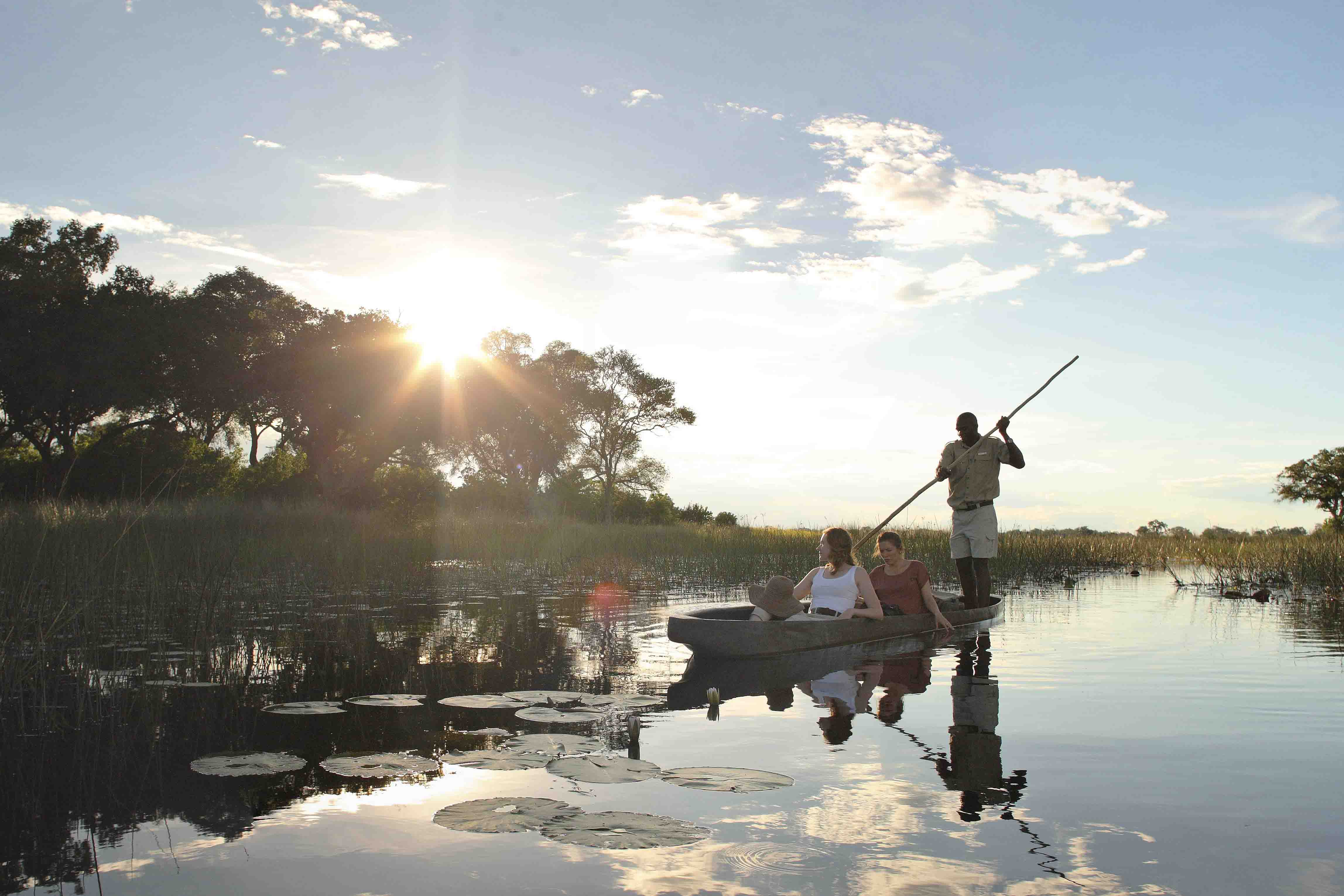Okavongo delta
A myriad of waterways with an abundance of life, a true environmental phenomenon
What will I experience?
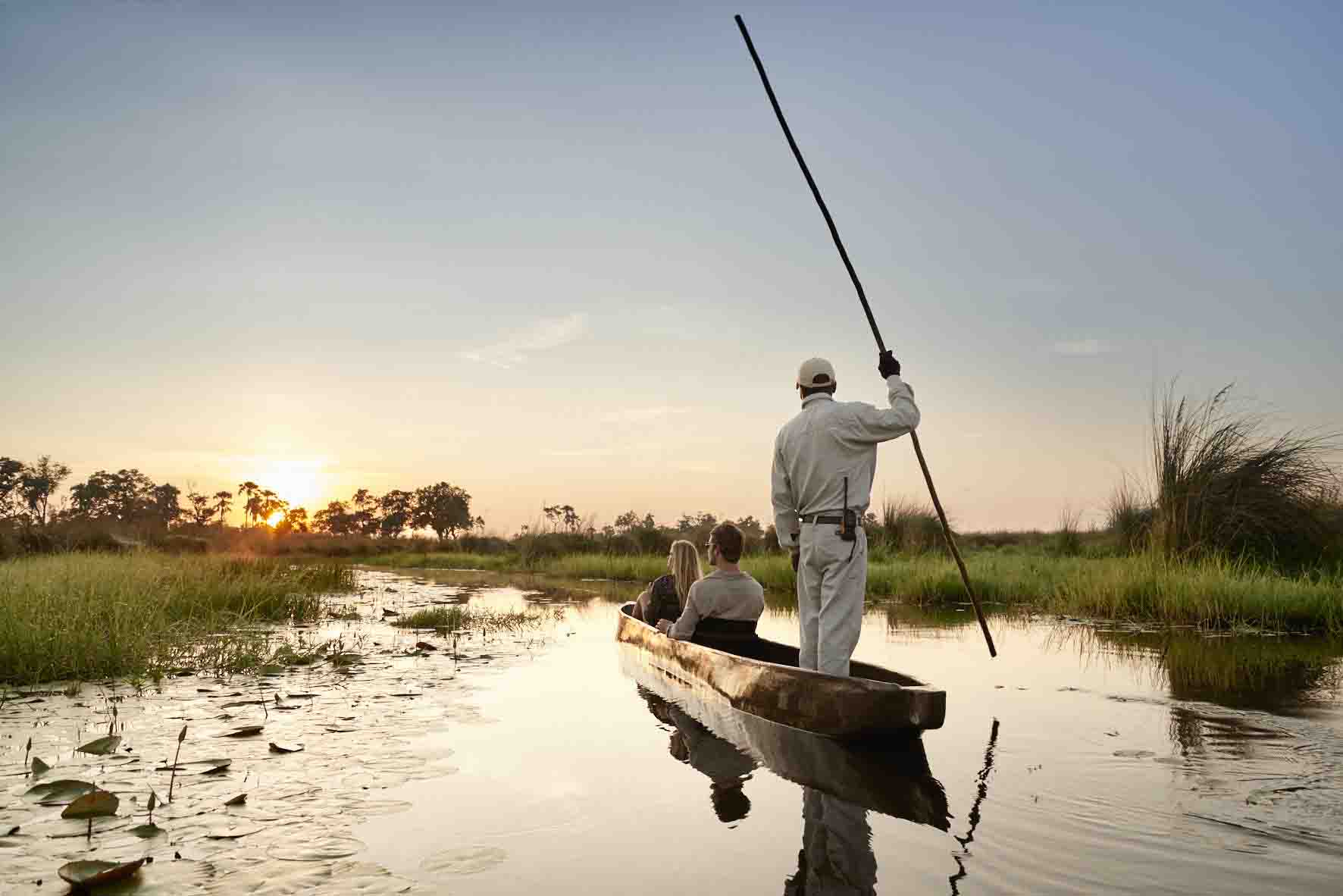
You will see water at its life bringing best; from humble beginnings as a raindrop in the highlands of Angola until its dramatic and long-awaited entry into the vast and intricate waterways of the Okavango Delta. As the waters rise you will find yourself drawn to the mystery of the ever-changing
pulse and flow.
Gently floating in a Mokoro you will feel a sense of wonder and intrigue as you are propelled along by the dip and sway of your expert guide’s rhythmic motions. With his callused hands and well-trained eye, he knows the waterways better than the lines on his own face, and yet for him the magic still and will always remain.
Rounding the next bend you hear the smile in his voice as he breathes the word “elephants” there they are, the mightiest of the mighty, playing in the water. No feeling can compare as your breath catches in your throat and everything fades away, save for the sound of their splashing and the sun on your face. Welcome to paradise.
Tell me more
Where the Okavango River flows down from the Angolan Highlands to meet the Kalahari Desert, you will discover the myriad of waterways which make up the breathtakingly unique Okavango Delta. At the heart of the delta is Chief’s island, once a hunting area for the chief, now a refuge for an abundance of wildlife when the waters rise, including over 160 species of mammals and 530 species of bird.
This island, the largest in the delta, was formed by the shifting of a fault line which raised a 70 kilometre (43 mile) by 15 kilometre (9 mile) stretch of land. Other islands in the delta found more humble beginnings as termite mounds. Rich in human heritage dating back to hunter gatherer times; the delta’s surrounds are home to various peoples from across Botswana. Tsodilo Hill, an area shrouded in legend is subject to claims from the Hambukushu, Bugakhwe and Xanikwe people that some 4 000 rock paintings in the area
are the workings of their ancestors. While the Bakgalagadi, Wayeyi and Hambukushu, Dxeriku, Herero and Tawana can trace their lineage back to the first farmers in the delta.
When should I go?
The climate of the Okavango Delta is defined by two seasons, namely the wet season from November/December until April and the dry season from May to October.
During the dry season wildlife viewing is at its best, and flooding of the delta is at its highest due to how long it takes the water to reach the Delta from the highlands. This creates ideal conditions for game viewing Makoro (dugout canoe) trips. Peak season runs from July to October as the weather starts to warm up, and the animals flock towards water sources. October is particularly hot before the rains bring some relief to the region.
The wet season is known to be the best time for bird watching as there are many migratory birds that frequent the delta during the rainy months. There are also high numbers of baby animals, which leads to an increase in the presence of predators. In the wet season certain areas may become inaccessible, particularly from January to March when rainfall is at its highest. However, it is important to remember that a large amount of wildlife remains at the heart of the delta due to the availability of permanent water sources and game viewing is possible even during the low season.
Gallery
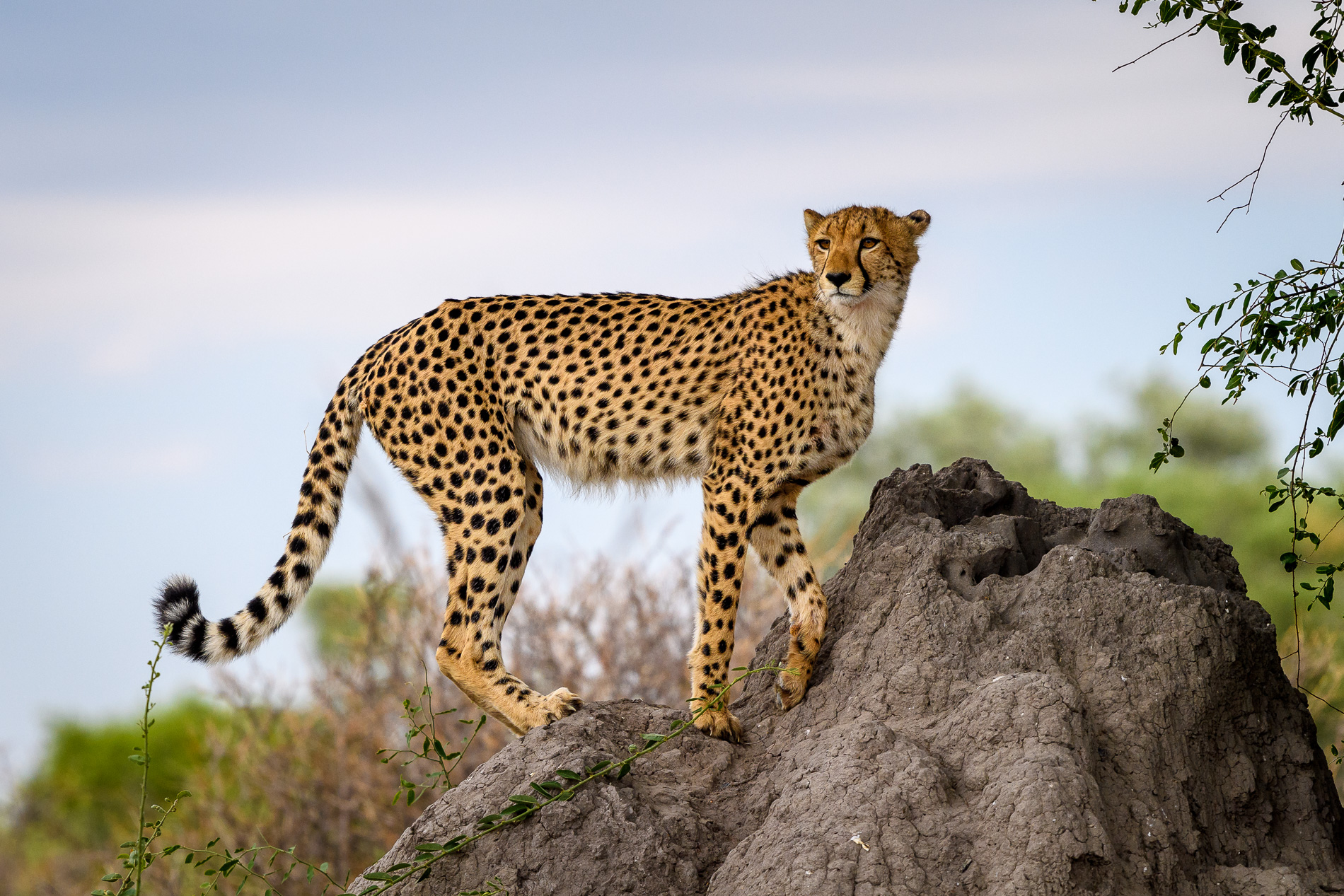
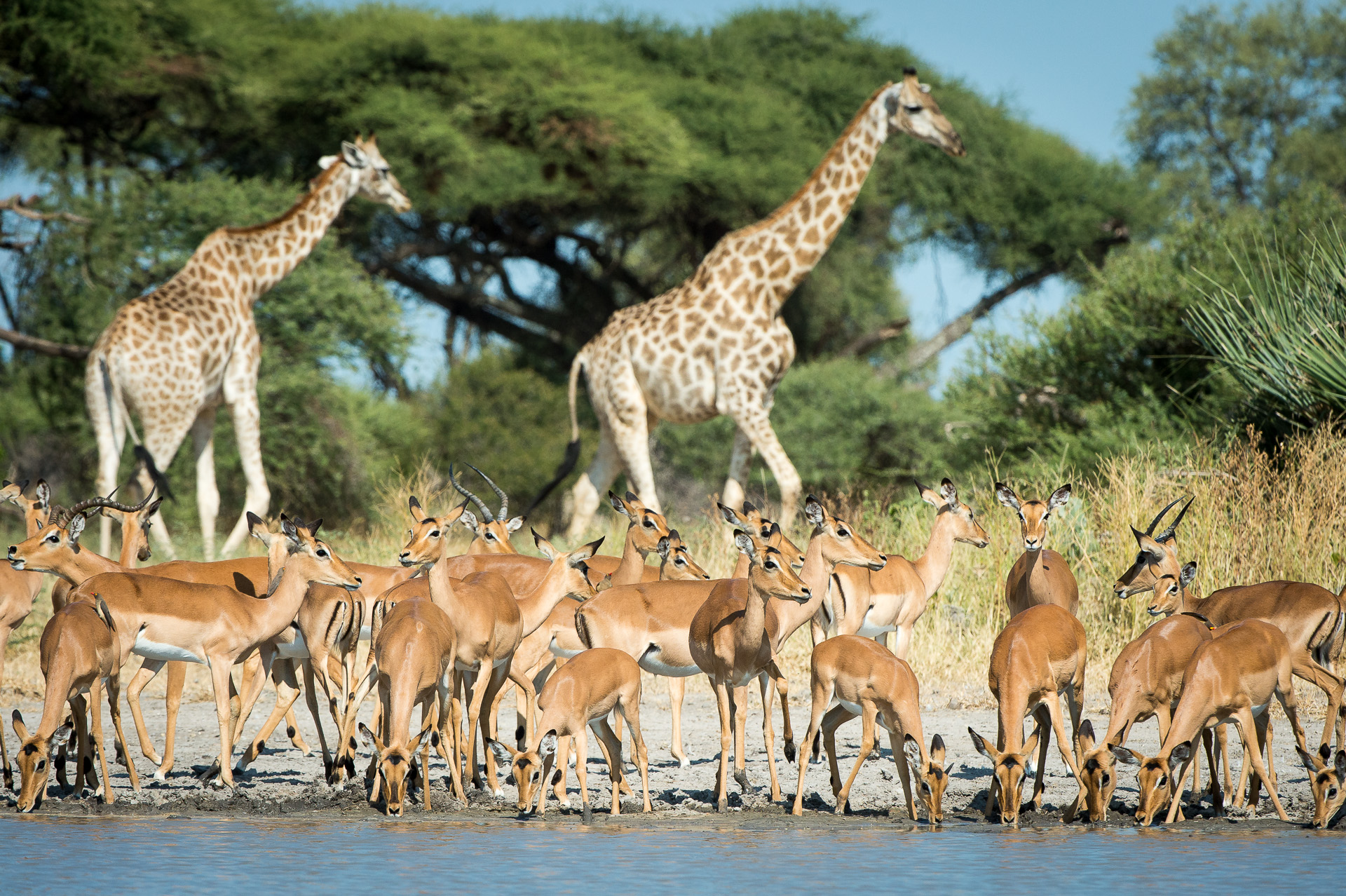
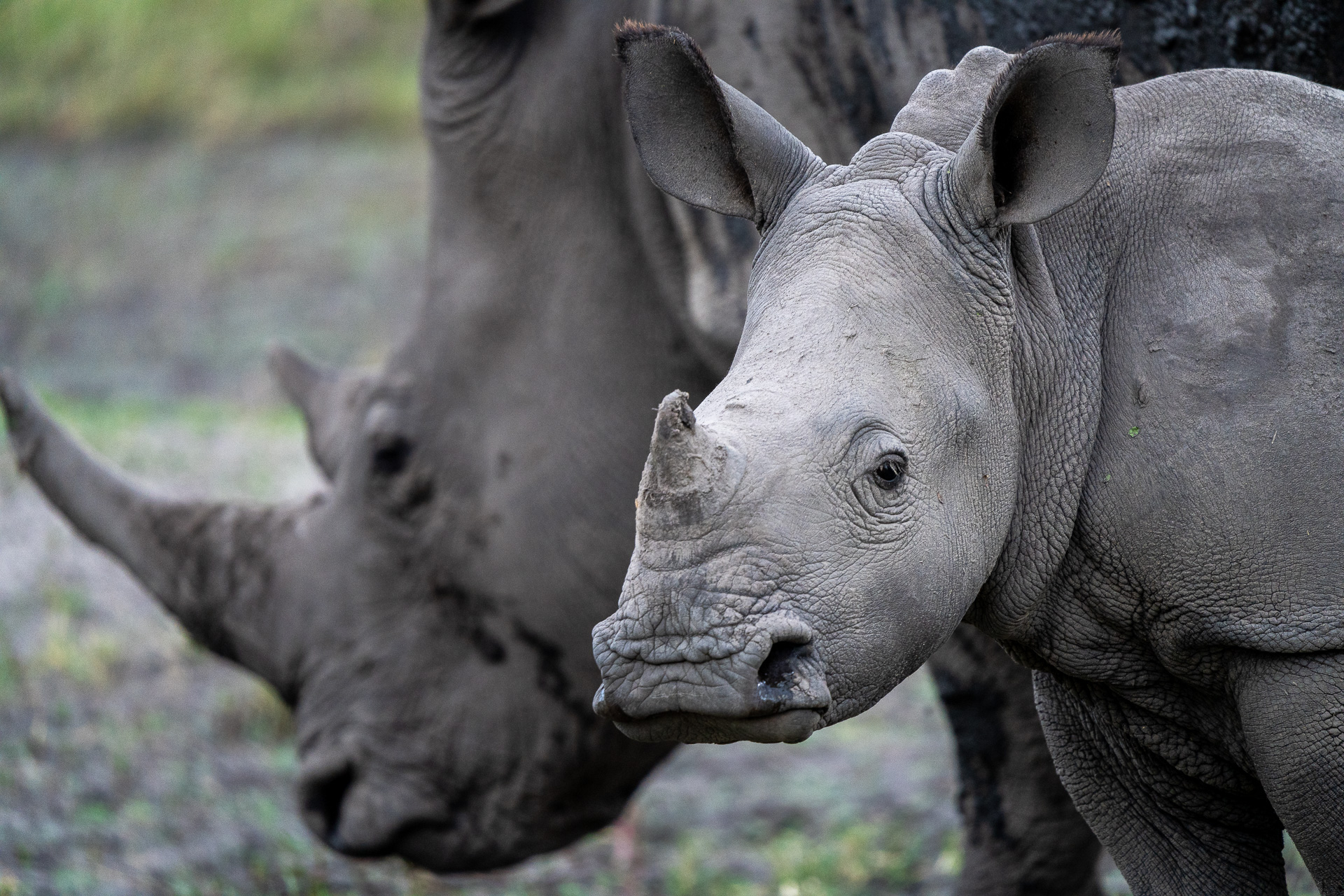
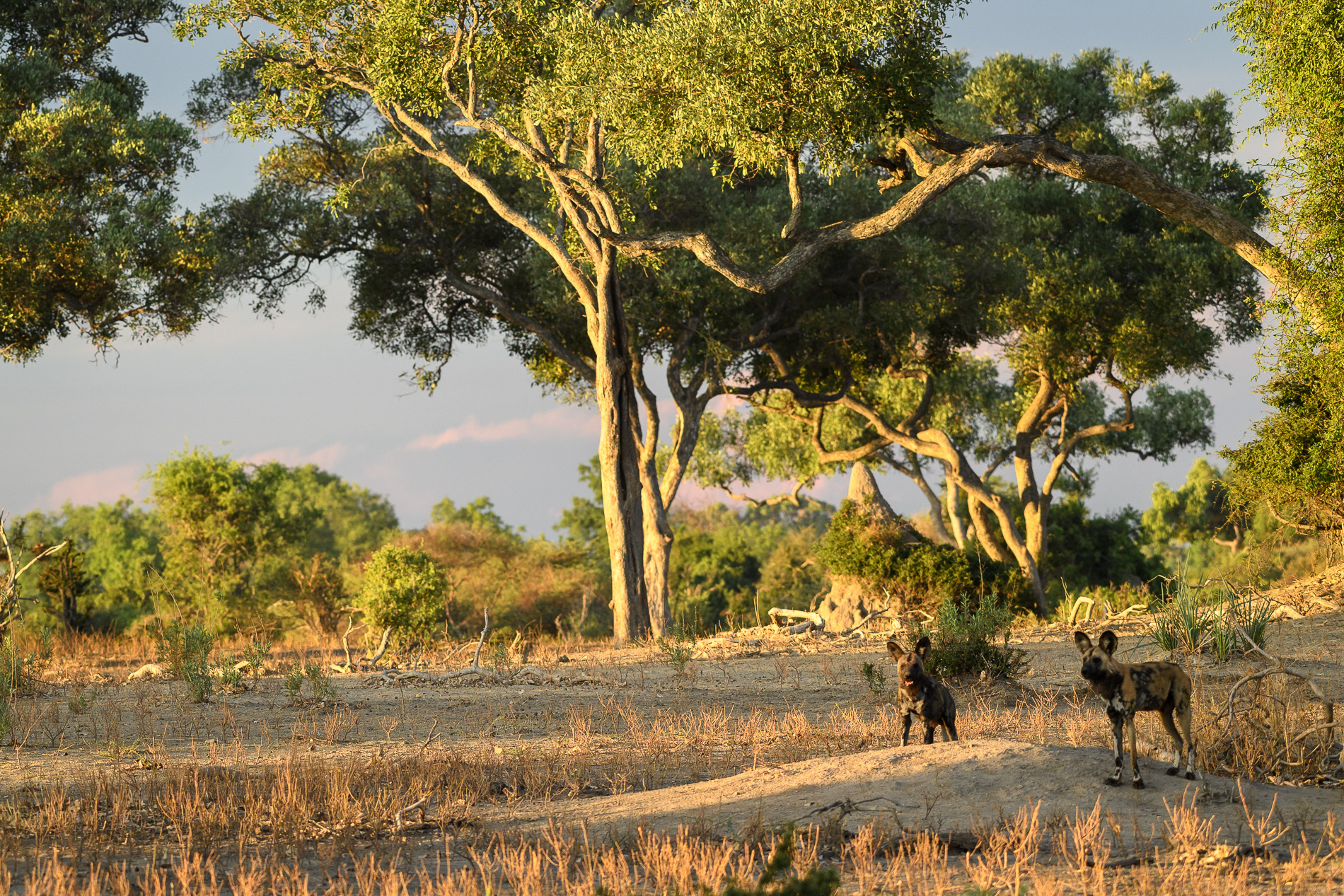
CAMPS
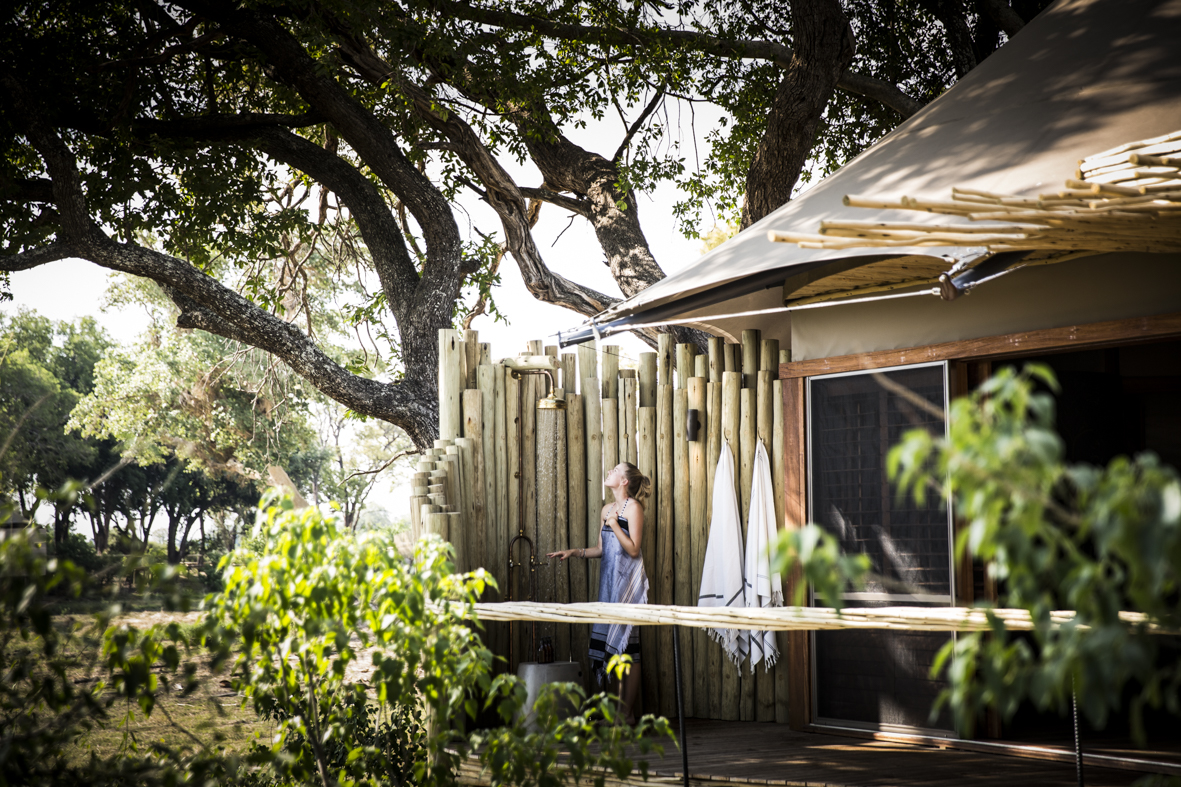
Little Mombo Camp
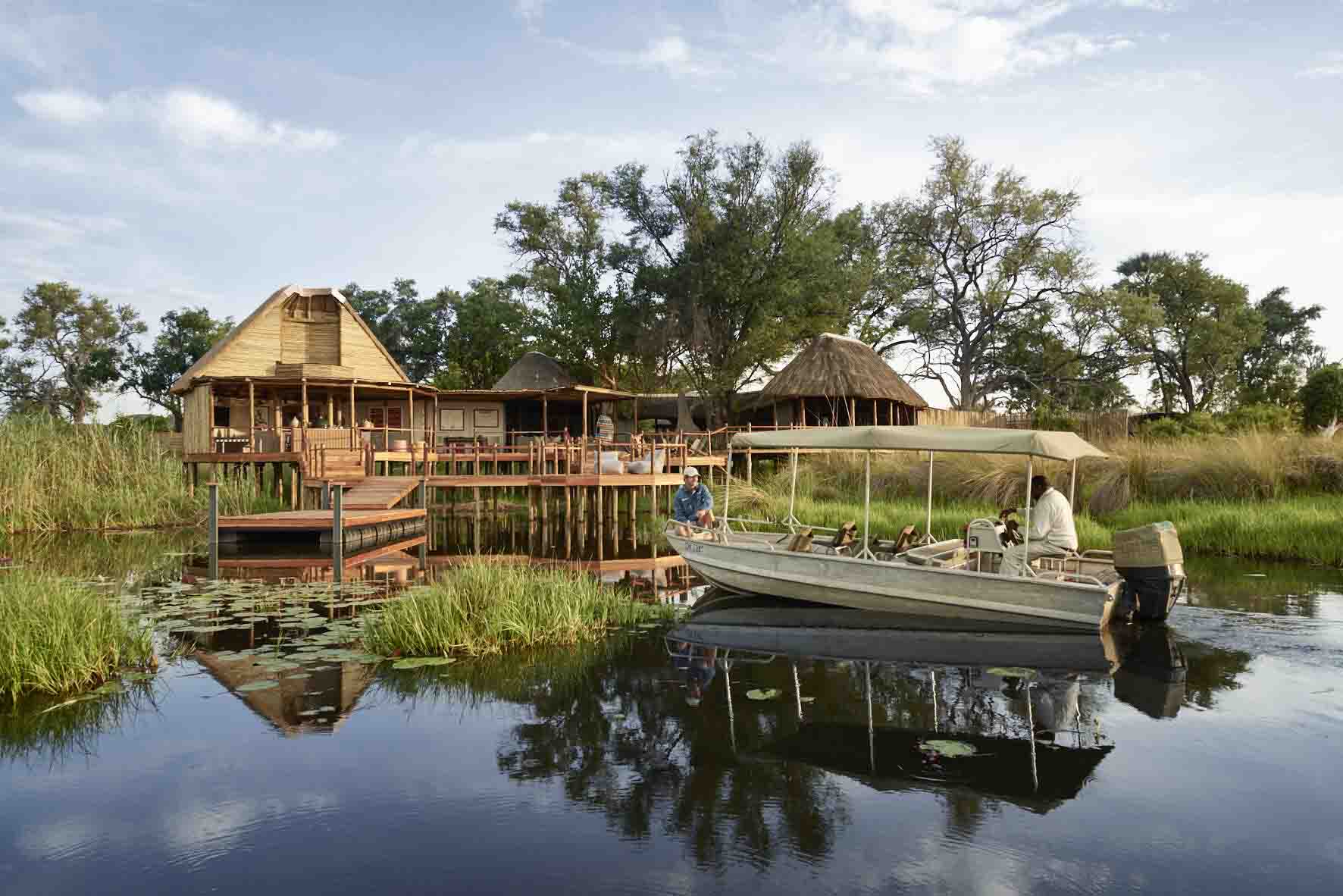
Sanctuary Baines Camp
